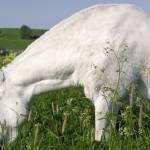Helping Older Horses Stay Healthy: Musculoskeletal System

According to a lecture delivered by Mary Rose Pardis, a veterinarian at the Cummings School of Veterinary Medicine in North Grafton, Massachusetts, musculoskeletal problems were second only to diseases of the gastrointestinal system as the cause of death in a study group of older horses.
Pardis, who was speaking at a recent conference of the American Association of Equine Practitioners, said that well over one-third of lame horses in one equine hospital study were referred because of laminitis. Most of the laminitic horses also had Cushing’s disease, a condition that puts horses at increased risk. Lameness from degenerative diseases affected 55% of the older horses in the study.
Ideally, care of the musculoskeletal system of older horses should begin in their younger years when sound nutrition and appropriate exercise are combined to build a sturdy skeleton with sound joints, strong muscles, and flexible connective tissues. Horses that have avoided injuries from stress and overuse are likely to enter their senior years with minimal soundness problems.
However, virtually all horses begin to have chronic inflammatory changes in the joints as they age. Arthritis, bone chips, brittle cartilage, and conformation defects may affect soundness in many horses. Older broodmares often suffer from degenerative changes in the suspensory ligaments of the hind limbs, possibly as a combination of straight hock conformation and the increased weight of numerous pregnancies.
Not surprisingly, the most common medications given to horses in the study were NSAIDs and joint supplements, indicating that owners and veterinarians were interested in alleviating pain and stiffness in these equines. In addition to medication, owners can help their older horses stay more sound and comfortable by allowing as much pasture turnout as possible; keeping the horse in a suitable exercise program consisting of regular light work instead of occasional intense rides; and considering treatments such as acupuncture and massage therapy. These modalities have been shown to ease discomfort in some horses, and the use of joint supplements has increased stride length and flexibility in arthritic horses.
Feed management plays an important role in keeping older horses comfortable. Owners should choose a feeding plan that keeps senior horses from gaining too much body weight, as overloading arthritic joints increases discomfort. If horses gain weight on grain products, a balancer pellet that provides nutrients with minimal calories may be a better choice for the older horse. Grazing in a pasture will encourage the horse to move around rather than standing quietly in a stall for hours. Hay fed in the field can be spaced out in several small piles so that the horse has to move from one to another.








